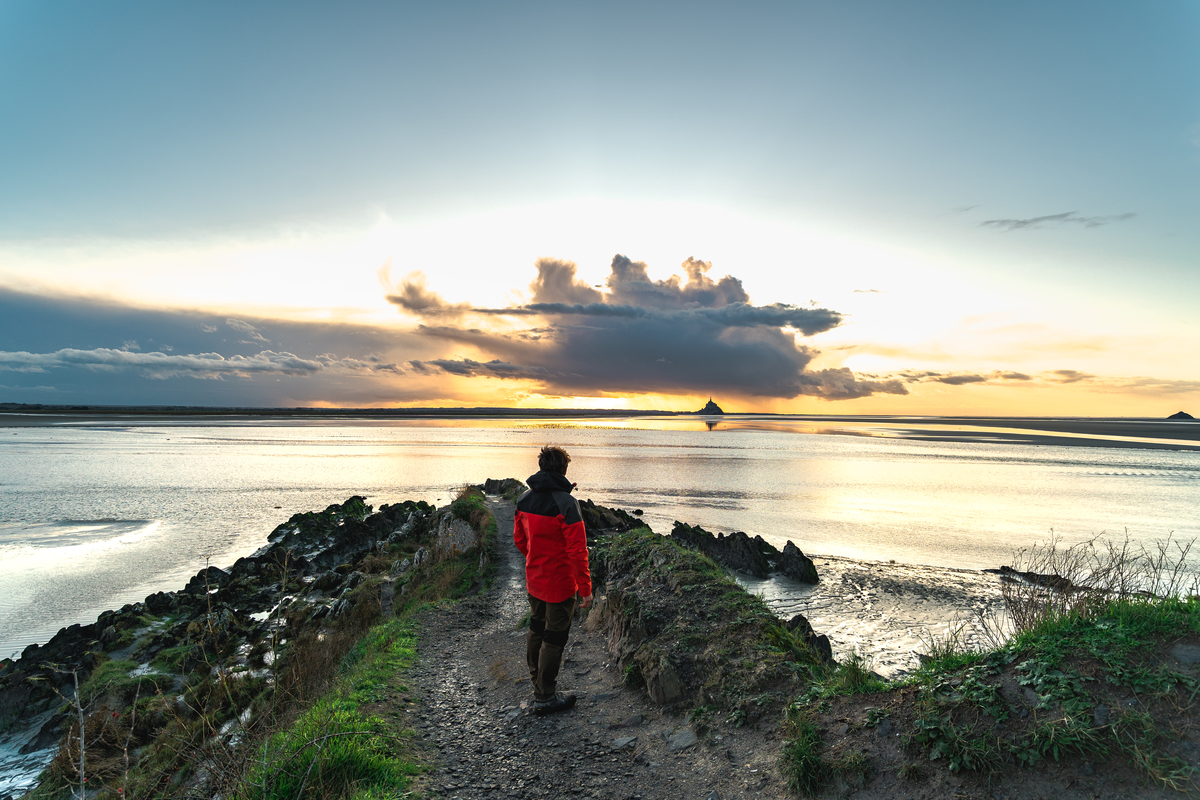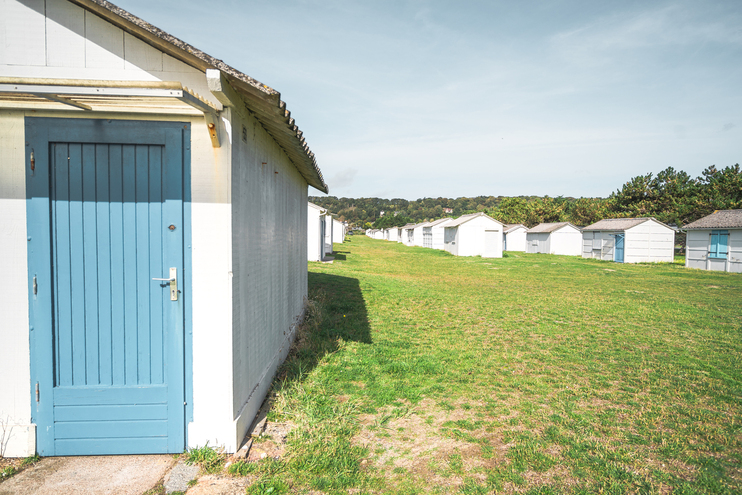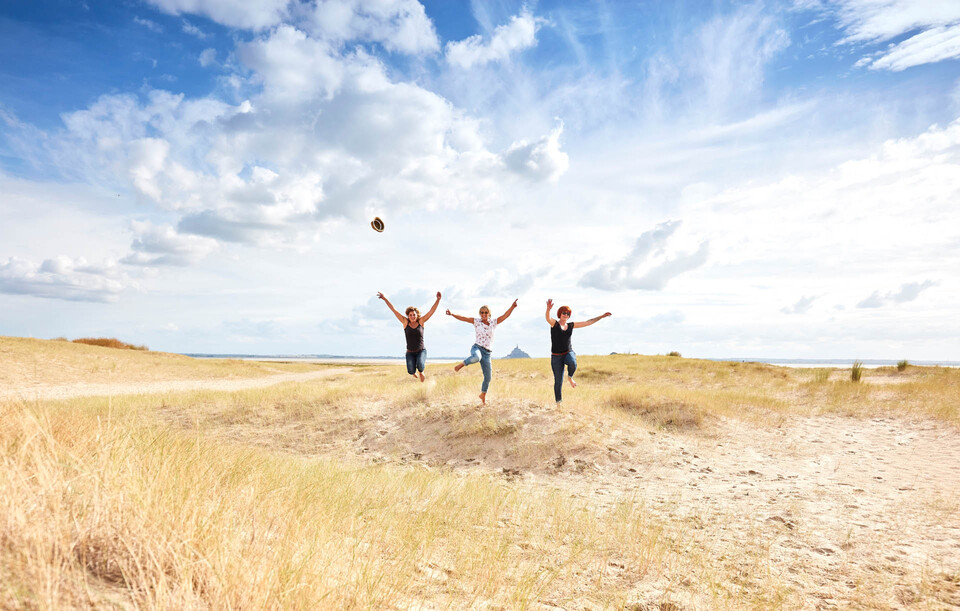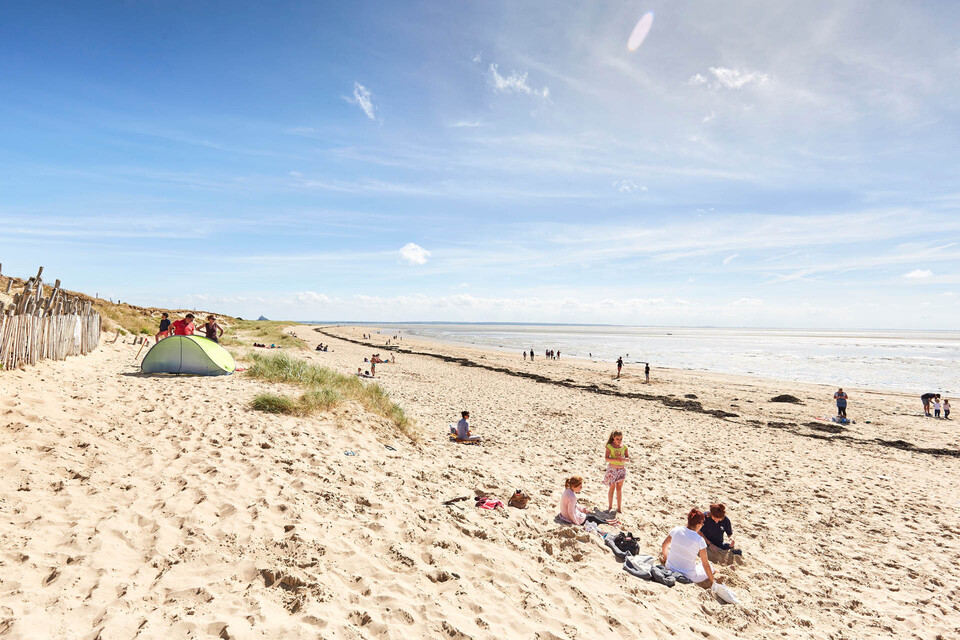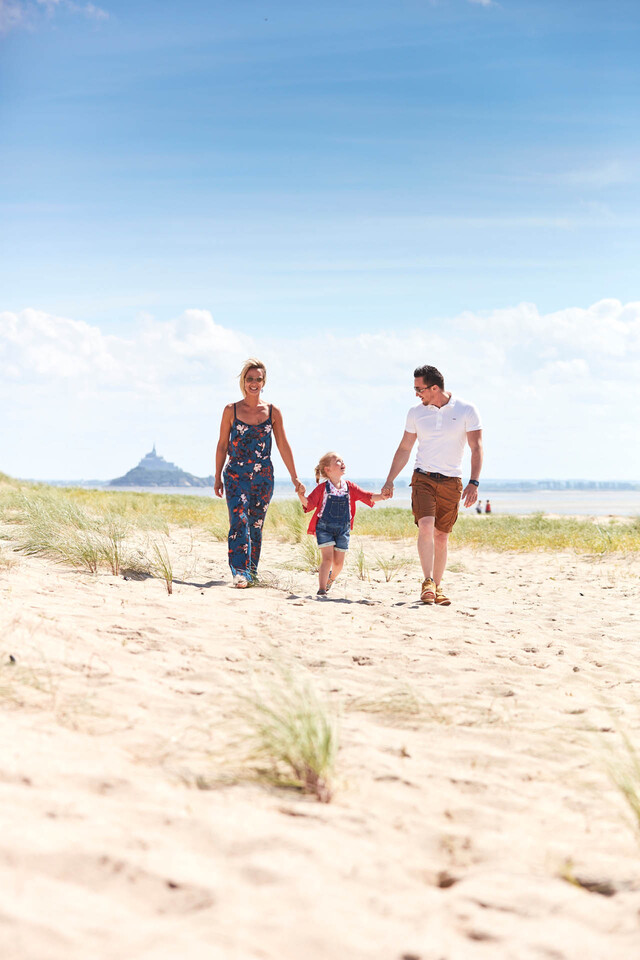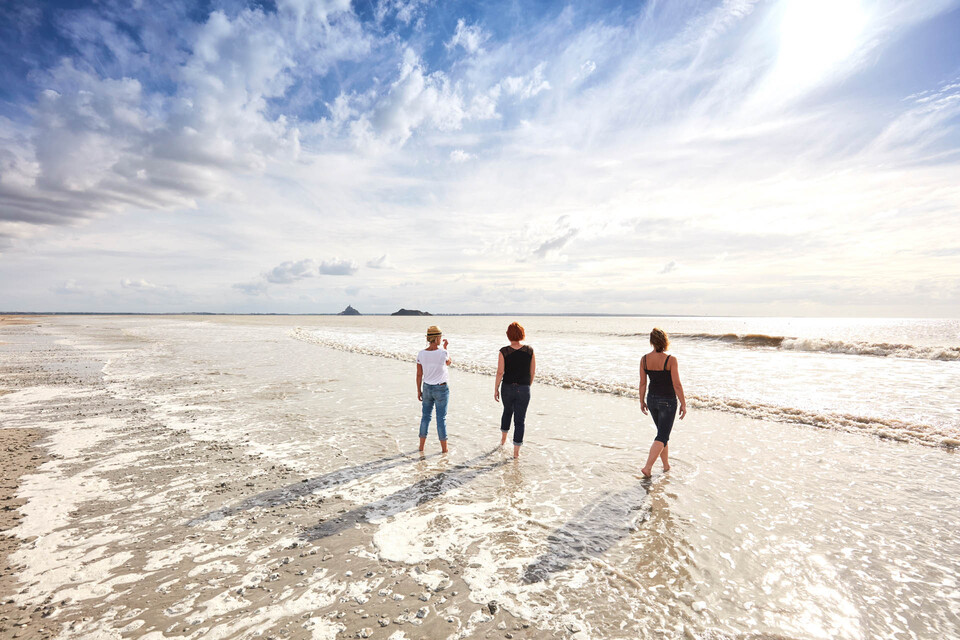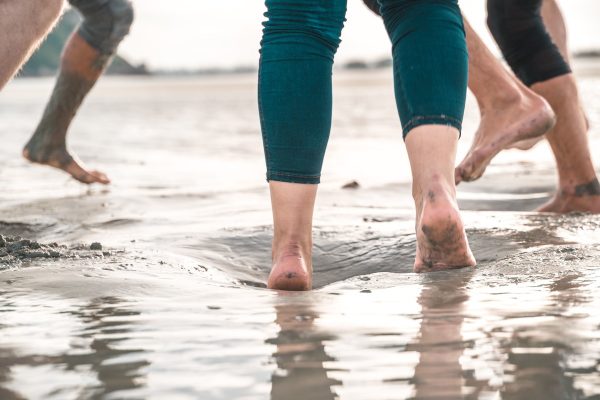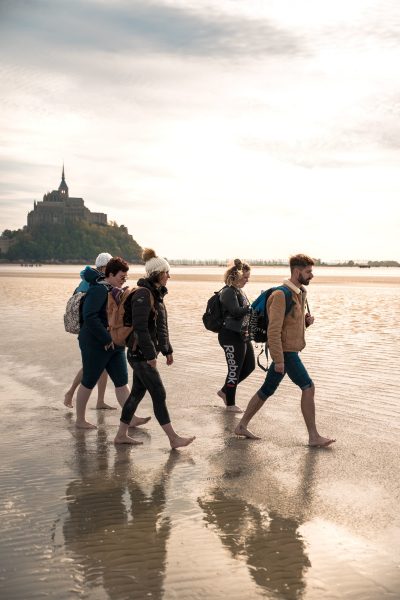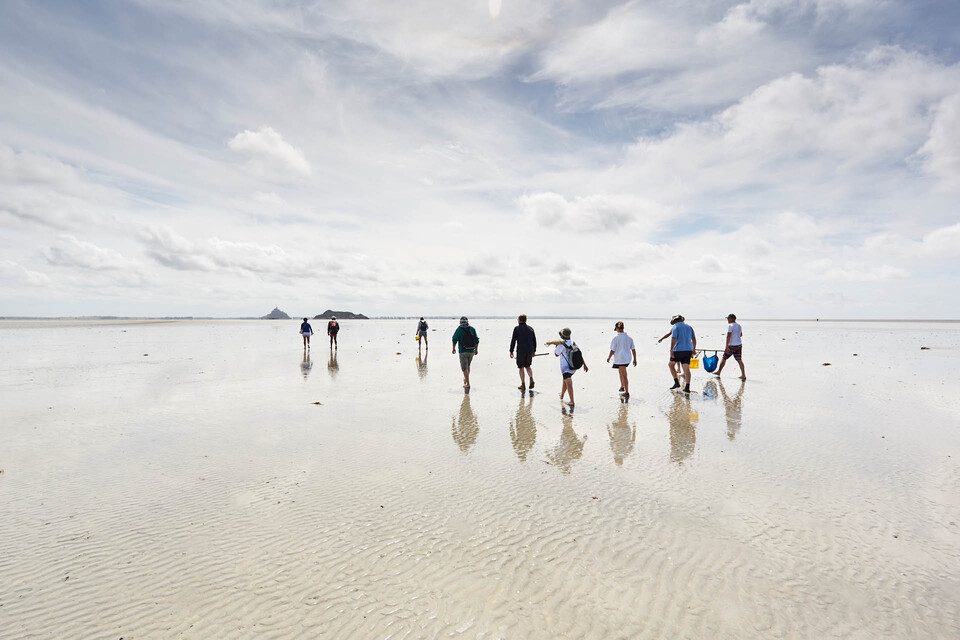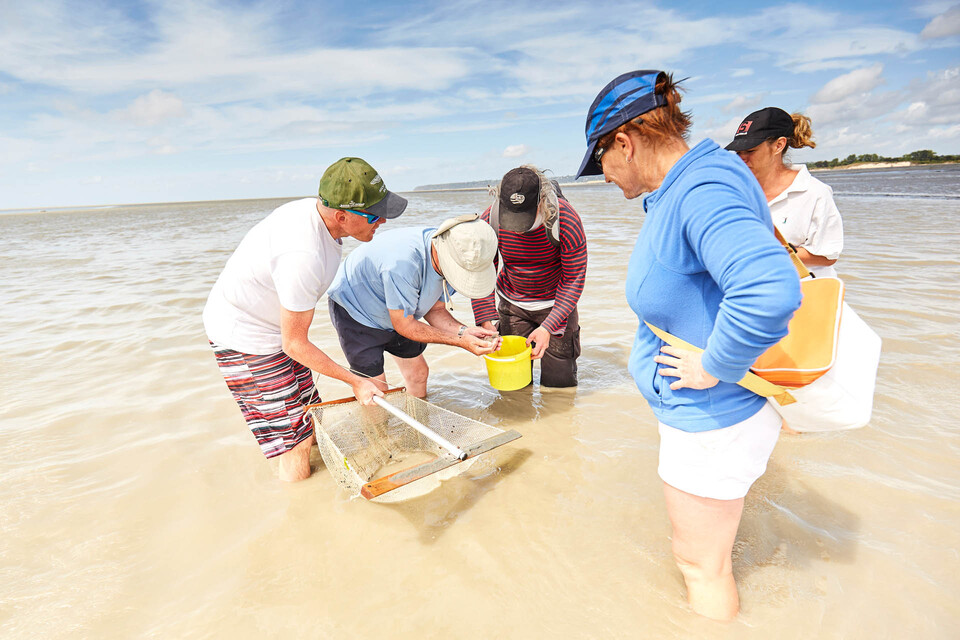The coastline of the villages of Genêts, Dragey-Ronthon, Saint-Jean-le-Thomas and Vains is ideal for hikers who love the great outdoors.
Dragey-Ronthon and Saint-Jean-le-Thomas
At Dragey, at the horse-riding centre, we can watch the efforts of the riders and their horses as they strive to enter the world’s elite of galloping and jumping athletes.
In the artists’ village of Saint-Jean-le-Thomas, a recognised Station Verte (Green Resort), tourists are offered a more tranquil experience, discovering the seaside villas of the belle époque. From its cliffs, you can admire one of the most beautiful viewpoints over the bay of Mont Saint-Michel.
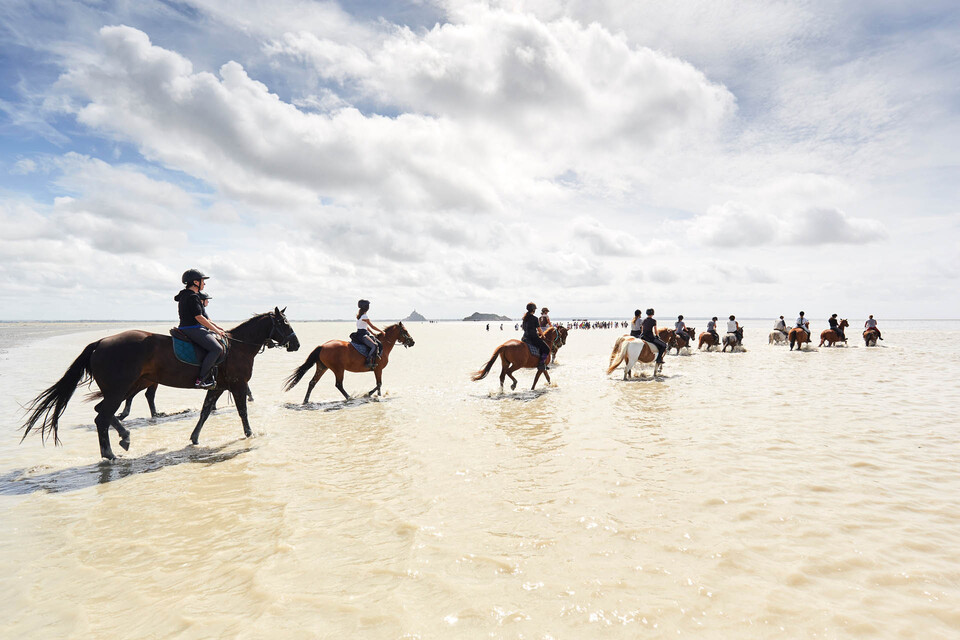
Genêts
In the charming village of Genêts there once existed one of the largest trading ports, now silted up.
Now, we can walk peacefully through the alleys and stop at the cemetery. Here, we can see the tomb of Adrian, a deputy quartermaster, who in 1914 had the idea to equip soldiers with helmets (which, incidentally, bore his name). These helmets protected our fighters on the Eastern Plains front during the First World War.
Genêts is also known as the starting point for the bay crossings, at Bec d’Andaine. This sandy point is located 1.5 km north of Genêts.
The Bec d’Andaine, with its beach and dunes, is the starting point for bay crossings, to reach Tombelaine or the Mont-Saint-Michel, or for pilgrimages to the abbey. Crossings can be made on foot or on horseback.
Bay crossings to reach the Abbey of Mont-Saint-Michel started as early as the Middle Ages. Many routes from the Montoises (villagers) came together at Genêts, from which point pilgrims could cross the bay from the Bec d’Andaine to the Mount.
The practice of pilgrimages resumed in the middle of the 20th century, and for the last twenty years or so the crossing of the bay with a guide has become an opportunity to reach the Mount while allowing visitors to discover the bay, and is becoming ever more successful.
Vains-Saint-Léonard
Classified as a Heritage Village, this former fishing village is today prized for its bay crossings and its authentic charm.
Nearby, you can visit the Bay Eco-Museum, where you can learn more about the fauna, flora, and past and present activities of men in the bay of Mont Saint-Michel.
Observe the Mont Saint-Michel from the tip of the Grouin du Sud : ideally at rising tide, on days with a high tidal coefficient to admire the tidal bore.

A coastline suited to gathering seafood by hand
Gathering seafood by hand is a traditional activity in the Bay. It offers an ideal environment for fishermen, especially during high tides, when vast expanses of sand or rock are uncovered.
However, in recent years, in order to preserve certain species living in the bay, the fishing area has been reduced. It is now only possible to fish north of Saint-Jean-le-Thomas, and as far as Granville.
Gathering seafood by hand is a highly supervised activity: be careful to respect the regulations, or you may need to pay a very steep fine !
Here are the regulations on the main shellfish you can find :
| Cash | Mini size. | Fishing period | Quantity / day / fisherman | Authorized tools |
| Sea almond | 4 cm | 1/9 to 30/4 | 100 | Fork, triangular shovel, toothed claw |
| Shell | 3 cm | All year | 100 | Tooth claw, hull rake |
| Cupped oyster | 5 cm | 1/9 to 30/4 | 72 | Knives, fangs |
| Mold | 4 cm | All year | 350 | Tooth claw, knives |
| Clam | 4 cm | All year | 100 | Fork, triangular shovel, toothed claw |
| Praire | 4.3 cm | 1/9 to 30/4 | 100 | Fork, triangular shovel, toothed claw |
WARNING : The tides can be truly frightening, which is why we advise leaving around two hours before low tide, to give you time to head back.
Don’t go too far, the sea will rise at “the speed of a galloping horse”: it might catch up with you !
